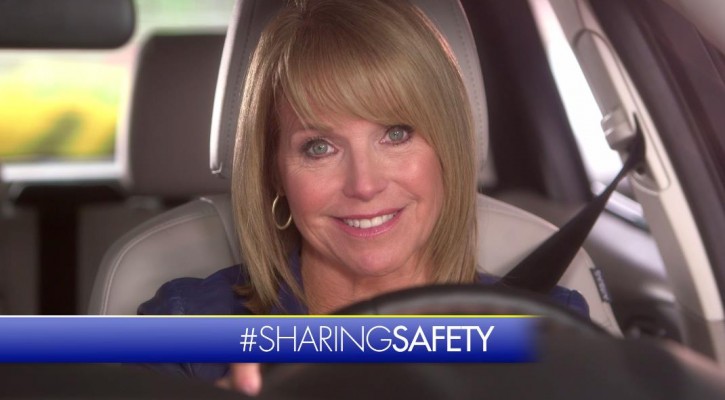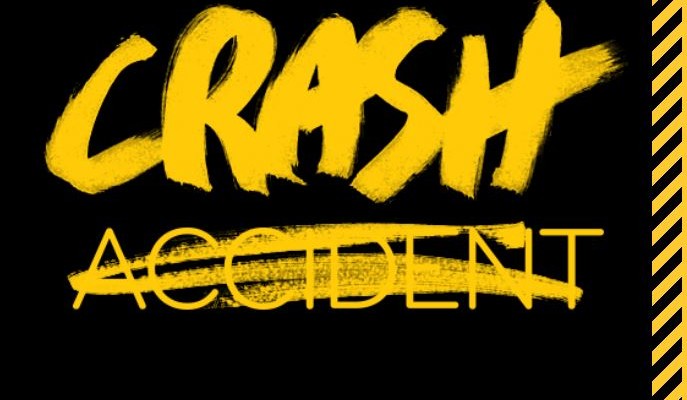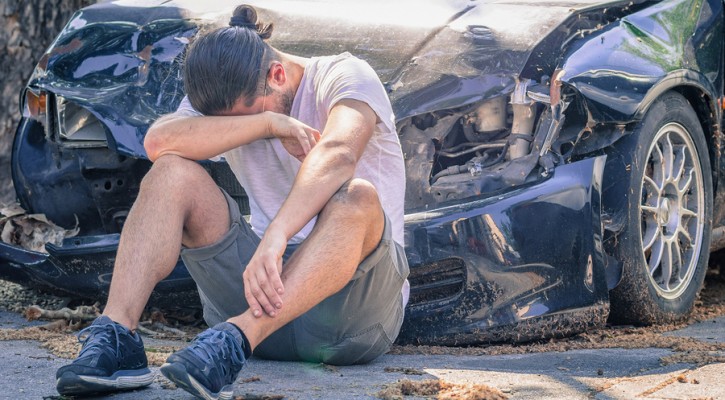Tag Archive: driving safety
Parents Don’t Understand The Dangers Of Teen Driving
December 3, 2015
A father’s grief following the death of his 17 year old son in a single car crash led him to write a book and produce a video to warn parents about the dangers of teen driving. The father, Tim Hollister, published his book Not So Fast: Parenting Your Teen Through the Dangers of Driving in 2013 and released the companion video on the ninth anniversary of his son’s death.
Teen drivers die at a disproportionate rate compared to all other age groups. In 2013, 1,691 teen drivers were killed and 177,000 were injured in car crashes. An additional 2,642 passengers, occupants of other vehicles, and pedestrians were killed in crashes involving a teen driver.
We have written articles on the dangers cited by Hollister countless times in this and other blogs but teens keep dying the same way month after month. Despite all the training and testing, teens die;
- Because their brains aren’t yet fully developed, leading them to take greater chances with no regard for the consequences.
- Most often in single vehicle crashes after losing control of their vehicle while speeding or driving distracted.
- While carrying other teen passengers who act as a distraction and whose presence, in some cases, lead the teen driver to show off by disregarding the safe driving rules.
- After drinking or using drugs.
- Because they text and drive with the belief that nothing bad will happen to them.
- Because they fail to wear seat belts.
Maybe, what it will take to get the word out to parents is the advice of a grieving father who knows now what he wishes he had known while his son was still alive.
The most important message is to not rely on driver’s ed, state tests, or common sense to keep your teen alive on the road. Parents must be constantly vigilant and set strict rules for their teen driver if they want them to survive into adulthood.
For more information visit: Not So Fast: Parenting Your Teen Through the Dangers of Driving

Michelin And Katie Kouric Want Your Best Driving Safety Advice
November 16, 2015
Michelin North America and Katie Kouric have teamed up to collect the best driving advice that you were given when you were a new driver. Not only do they want your best piece of advice, they want the story behind it.
Michelin is tying this in with a survey they commissioned that shows what most people knew already; most people think they’re good drivers but feel that most other drivers aren’t so good. What that really means is that most people can recognize bad driving behaviors in others but not in themselves.
Here are the main findings from the survey:
- The majority of drivers are confident in their own driving abilities (81 percent rank themselves highly), but 66 percent have felt unsafe when someone else was at the wheel.
- 3 in 4 (73 percent) have witnessed an accident or experienced a “close call” firsthand (76 percent), and 62 percent have been in an accident that someone else caused.
- 69 percent see other motorists ignoring safe-driving practices daily.
- Not surprisingly, 75 percent of drivers admit to “offering advice from the other seat.”
- The driving advice people receive most frequently includes signaling before changing lanes (75 percent) and staying in the right lane unless you’re passing (68 percent).
The survey also found that most people received their best piece of driving advice from their dad (52%), mom (32%), and driving instructor (27%). That’s great if Dad was truly a good driver and gave good advice. The problem is that too many bad drivers, without realizing it, are passing on their bad driving behaviors to their teens.
Most of the bad driving behaviors teens learn from their parents were learned by observing their parents drive from the time they were toddlers until they started to drive on their own. Those learned behaviors combined with a teen’s natural tendency to take risks, led to the deaths of 1,691 teen drivers in 2013.
Here’s a chance for both teens and their parents to pass on those good bits of driving wisdom and hopefully, through the story behind the advice, help others to be safer on the road.
Read more: Katie Couric, Michelin Encourage Drivers to Share Best Advice on Safe Driving

Texting and Walking Injuries Are Increasing
August 31, 2015
Texting and walking injuries and deaths are on the rise according to a new report released by the Governors Highway Safety Administration (GHSA) and the danger is especially high for teens. The report is a compilation of several studies including data compiled by Ohio State University, the University of Washington, the University of Georgia, and the Pew Research Center.
According to the Ohio State research, “between 2004 and 2010 the number of pedestrians killed while using a cell phone increased from less than 1% to 3.6%” and, in 2010, more than 1,500 pedestrians were estimated to be treated for injuries related to cell phone use while walking. Since 2005, the number of pedestrians injured while using a cell phone has more than doubled.
The Washington State researchers observed more than 1,100 pedestrians at 20 intersections in Seattle and found that “approximately one-third were engaged in a distracting activity such as emailing, talking to another person or listening to music.”
The University of Georgia researchers did a similar study but selected 20 intersections that were considered to be high risk based on data from the Georgia Department of Transportation. Their study showed that nearly half of pedestrians were engaged in some sort of distracting behavior.
A Pew Research Center survey found that 53 percent of adult cell phone users have bumped into something or someone due to distracted walking. The bump rate is especially high for those in the 18 to 24 year age group.
The problem is especially bad for teens who do this on a regular basis. Safe Kids Worldwide reports that forty percent of teens have been hit or nearly hit by a car, bike or motorcycle while walking. Their report shows that one out of five teens and one out of eight middle schoolers regularly cross the street while distracted by some sort of technology. Teens now have the highest pedestrian death rate among children 19 and younger.
The problem has become so bad that the Urban Dictionary has coined a new phrase for it: Petextrian n. One who texts while walking, usually unaware of their surroundings.
It’s obvious that, if you can’t even text and walk safely, texting while driving is out of the question.
Read more: Everyone Walks

There’s No Such Thing As A Traffic Accident!
August 26, 2015
There’s no such thing as a traffic accident! We have written on this before but it bears repeating; especially for young drivers. Before anyone tries to tell us we’re crazy, let’s take a look at the meaning of the word accident.
The dictionary defines an accident as “an unfortunate incident that happens unexpectedly and unintentionally, typically resulting in damage or injury.”
An accident is a situation that we have no control over. If you’re struck by lightning or a tree limb falls and hits you in the head, that’s an accident. However, where there’s a motor vehicle crash, it’s rarely an accident; it was caused.
Motor vehicle crashes are caused when one or more drivers make a poor choice and that poor choice leads to a crash. Driving too fast to safely react to road conditions ahead or running a red light are examples of the poor choices that drivers make and they aren’t accidents; they are deliberate choices made by the driver. Even allowing yourself to be distracted and not paying attention to the road ahead is a choice that a driver makes and it can easily lead to a crash but not to an accident.
As drivers, we have choices and we can either choose to drive safely, pay attention to the road ahead, and use caution when potentially dangerous situations come up ahead. Or, we can choose to speed, run red lights, send text messages, or just allow our minds to wander and not pay attention to what may be ahead of us. The crash may be unintentional but the driver’s poor choice caused it. As drivers, the choices are ours and ours alone and can’t be blamed on some outside force.
Of course, if you’re driving safely and obeying all the traffic laws and someone hits you, from your perspective, the situation would qualify as an accident but, for the other driver who hit you as the result of a poor choice he or she made, it wasn’t an accident at all.
So what about bad weather events? Can’t bad weather cause accidents? It all depends on how the driver reacts to the bad weather. Did he or she continue to drive at normal speeds in a heavy fog or fail to realize that there may be patches of slick ice on the road? Did the driver slow down or get off the road to wait for a heavy rain storm to pass? Weather can cause accidents but, more often than not, it was the poor choice of how the driver reacted to the bad weather that causes a crash.
An organization called Families for Safe Streets is calling for people to stop using the word accident when it comes to motor vehicle crashes. The organization is made up of people who have lost loved ones in motor vehicle crashes and they want to spread the word that they didn’t lose their loved one due to an accident. They want it known that a driver made the choice to take the actions that led to the death of their loved one.
Families for Safe Streets is conducting a drive to educate people that there are no motor vehicle accidents and the word “crash” should be used instead. If you agree, they’re asking you to sign a pledge and help spread the word to stop using the word accident when motor vehicles are involved.
To sign the pledge, go to: I will not call traffic crashes “accidents.” I will educate others about why “crash” is a better word.

Teen Drivers Most Likely To Kill Passengers And Non-Occupants
June 1, 2015
Teen drivers are most likely to kill their passengers or non-occupants of the vehicle than themselves. This finding is part of a study recently released by the AAA Foundation for Traffic Safety. The study looked at crashes involving at least one teen driver aged 15-19 between 1994 and 2013 and revealed some interesting findings.
The good news from the study is that deaths and injuries in crashes involving teen drivers have decreased steadily over the years. The greatest decrease is among the youngest drivers. When comparing the death rate for teens at its peak in 1999, the number of teen drivers involved in fatal crashes has fallen by 56 percent and the number involved in injury crashes has fallen by 51 percent.
The reasons for this aren’t fully known but experts suggest that stronger Graduated Driver License Laws (GDL) have played a part. The crash rate is higher for 18 and 19 year olds than for younger teens and that may reflect that older teen drivers, out from under the restrictions of GDL laws, may now feel free to take more risks.
The bad news is that teens still crash at a higher rate than older drivers and, more often than not, someone other than the teen driver is most likely to be killed or injured in the crash. Forty percent of people killed and 50 percent of those injured were non-occupants of the teen driver’s car, either occupants of other vehicles or pedestrians and cyclists.
When passengers inside the teen’s vehicle are added, the number of deaths, other than the teen driver, grow to 66 percent and injuries grow to 67 percent. For the teen drivers themselves, the fatality rate is 34 percent and the injury rate is 33 percent.
Read more: Teen Driver Crashes 1994-2013
